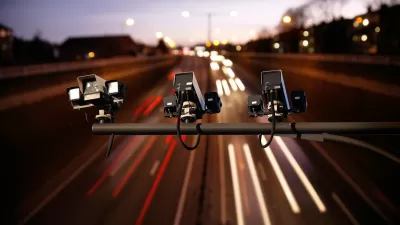For the second time in a year, Baltimore has pulled the plug on both its red-light and speed enforcement cameras, paying the contractor $600,000 to do so. Re-evaluation will determine where the city, which now owns most of the cameras, goes next.
"Termination of the (five-year) contract with Brekford Corp. puts the future of the city's speed and red-light camera system in question. One city councilwoman says it's time to stop using technology to nab speeders and red-light runners," write Scott Calvert and Yvonne Wenger of The Baltimore Sun.
Sources familiar with discussions between the city and Brekford said city officials had grown frustrated with the company's mistakes in trying to revive Baltimore's program, once North America's largest with more than 160 cameras. Speed cameras alone generated $50 million since 2009.
Tests by the city after the program went offline showed that, almost a year after Brekford took over in January, the system was still troubled by inaccurate speed readings, incorrect addresses and tickets listing wrong information on how to pay a citation, city officials have said.
Inaccuracies plagued the prior contractor as well. A Baltimore Sun investigation had revealed many glaring errors with Xerox State and Local Solutions, "including one that ticketed a driver for speeding while stopped at a red light."
Where the city goes from here will be determined after evaluation of the past program. Some on council still support using traffic enforcement technology. The termination agreement with Brekford will leave most of the cameras and associated technical network in city hands - for which the city had made "a previous payment to Brekford of $700,000 in August. The city has said that was partial payment for Brekford's purchase of 72 speed camera units, for which the city had agreed to pay $2.2 million," according to the Sun reporters.
Ending the five-year contract early will allow the city to "re-evaluate the scope" of its speed and red light camera program, change the way it compensates the vendor and "better execute the public safety mission of automated traffic enforcement," according to a memo from a city attorney describing the deal.
The $600,000 payment to Brekford was approved by the Baltimore City Board of Estimates [Agenda, PDF] on Wednesday, reported Fox 45 of Baltimore.
Nearby Washington D.C. has embraced the use of speed cameras for a variety of applications as we noted in September.
An extended version of this article can be found in The Baltimore Sun.
FULL STORY: Baltimore Will End Speed Camera Contract

Alabama: Trump Terminates Settlements for Black Communities Harmed By Raw Sewage
Trump deemed the landmark civil rights agreement “illegal DEI and environmental justice policy.”

Planetizen Federal Action Tracker
A weekly monitor of how Trump’s orders and actions are impacting planners and planning in America.

The 120 Year Old Tiny Home Villages That Sheltered San Francisco’s Earthquake Refugees
More than a century ago, San Francisco mobilized to house thousands of residents displaced by the 1906 earthquake. Could their strategy offer a model for the present?

In Both Crashes and Crime, Public Transportation is Far Safer than Driving
Contrary to popular assumptions, public transportation has far lower crash and crime rates than automobile travel. For safer communities, improve and encourage transit travel.

Report: Zoning Reforms Should Complement Nashville’s Ambitious Transit Plan
Without reform, restrictive zoning codes will limit the impact of the city’s planned transit expansion and could exclude some of the residents who depend on transit the most.

Judge Orders Release of Frozen IRA, IIJA Funding
The decision is a victory for environmental groups who charged that freezing funds for critical infrastructure and disaster response programs caused “real and irreparable harm” to communities.
Urban Design for Planners 1: Software Tools
This six-course series explores essential urban design concepts using open source software and equips planners with the tools they need to participate fully in the urban design process.
Planning for Universal Design
Learn the tools for implementing Universal Design in planning regulations.
Clanton & Associates, Inc.
Jessamine County Fiscal Court
Institute for Housing and Urban Development Studies (IHS)
City of Grandview
Harvard GSD Executive Education
Toledo-Lucas County Plan Commissions
Salt Lake City
NYU Wagner Graduate School of Public Service





























